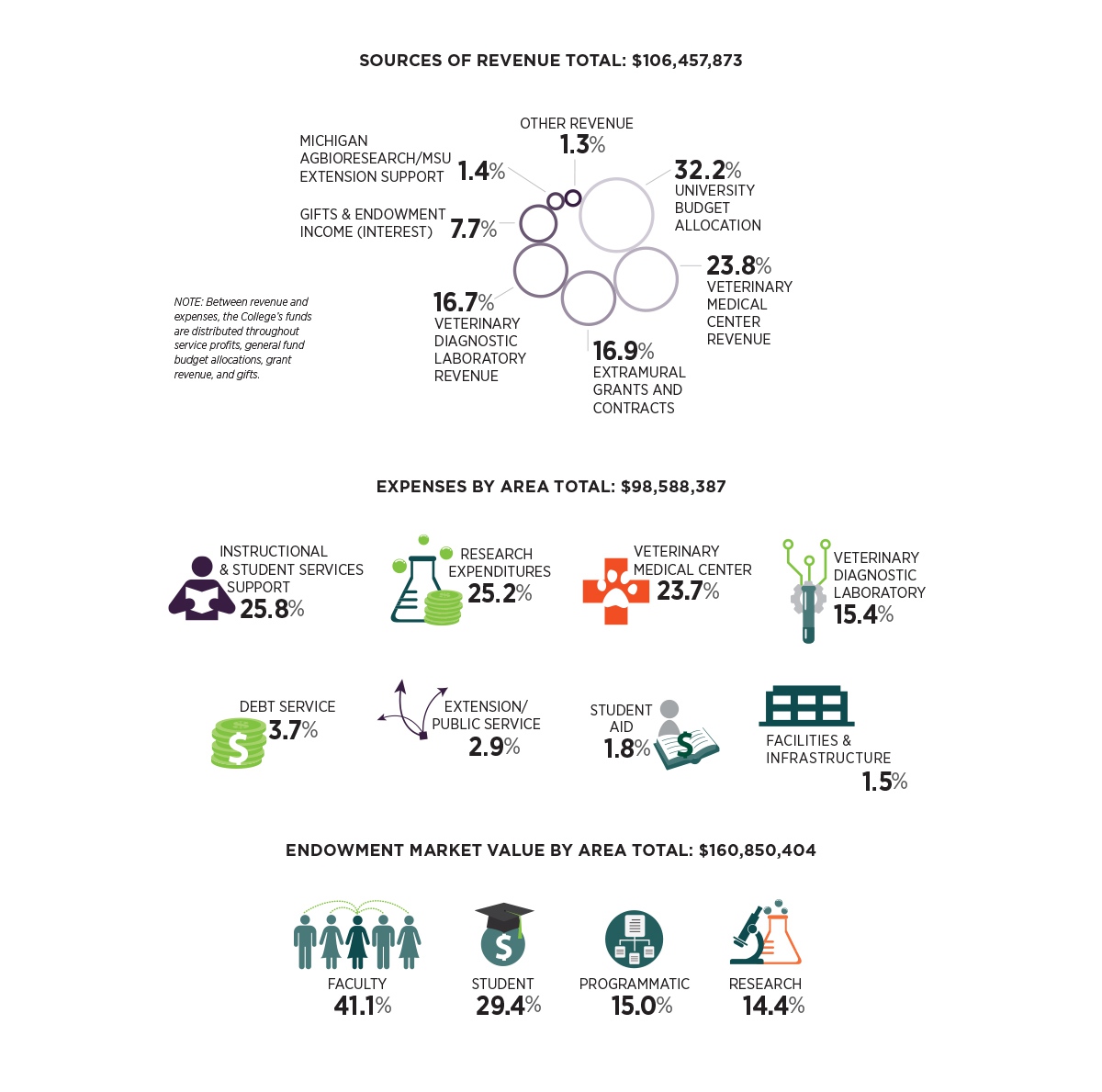The Michigan State University College of Veterinary Medicine’s revenue total increased by nearly 5 percent, or $4,654,411, much of which is furnished by friends of the College and the University. While expenses also increased, these were intentional and strategic. Increases in research expenditures, as well as those toward the College’s debt service, enabled the College to maintain its trailblazer status in biomedical research and prepare for its next stage of growth as a financially healthy institution. The College also continued to invest in key mission points including veterinary education, service, and outreach.
The College maintains endowment accounts to support its strategic pillars like scientific research, education, and direct student aid, areas of particular interest when it comes to the advancement of veterinary science and the preservation of the profession. That’s good news because aspiring veterinary professionals need more support than ever. While the United States Bureau of Labor Statistics projects a 17 percent increase in veterinary jobs by 2030, the American Veterinary Medical Association (AVMA)
warns of the high number of veterinarians expected to retire in the next 15 years, as well as the high turnover rate expected among those who work in the field.
Parts of these challenges can be attributed to the cost of education. In 2020, AVMA reported that the average education debt for veterinary graduates was $160,000, but that figure includes students who had no debt. The figure also doesn’t emphasize critical factors like race; the mean debt for white graduates was $151,174, while Black graduates held an average of $249,436.
As a college, educating the next generation of veterinary professionals is the most critical point of focus. With that comes the funding of veterinary education, often an imposing load for individual students to take on. When it comes to student debt, veterinary students are some of the most in-need of scholarships. Every $1.00 in scholarship can replace $2.00 in loan payments for veterinary students, another reason the College places high emphasis on direct student aid.

